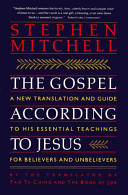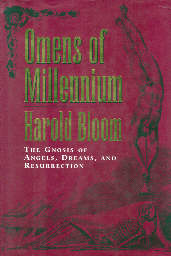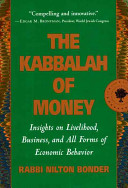The Gospel According To Jesus:
A New Translation and Guide to His Essential Teachings for Believers and Unbelievers
by Stephen Mitchell
Review By Dan Geddes
Stephen Mitchell’s project in The Gospel According to Jesus is to present and interpret the authentic teachings of Jesus. Jesus’ message has long inspired humankind, despite its obfuscation behind the sometimes hateful teachings of the Gospel writers. In his Introduction, Mitchell distinguishes between the wise and forgiving Jesus and the punitive, self-centered “Jesus,” whose utterances were written by the gospel writers to serve the political purposes of the early church.
Most New Testament scholars agree that large sections of the four Biblical gospels are the fictional creations of Mathew, Mark, Luke, and John. Mark’s stands as the oldest, most reliable gospel, written around 70 C.E., and is the probable source text for much of Matthew and Luke. John didn’t take shape until around 100. Mitchell finds as much of the authentic Jesus even in the apocryphal Gospel of Thomas as he does in John.
Mitchell attempts to present a gospel of Jesus, rather than one of the gospel writers. The good news of Jesus is that the Kingdom of God is within us, and so is attainable. It is attainable through forgiveness and magnanimity. The Kingdom of God is not a time or place in the future, or in an afterlife, but is a spiritual state, perhaps best seen in children and in the enlightened few.
Mitchell’s work delivers a picture of Jesus the man very different than that found in traditional religion. We know very little about the historical Jesus: “He was baptized by John the Baptist. He taught. He healed. He was crucified by the Romans. The rest is silence, probabilities, and hints” (17). The Christmas accounts in Matthew and Luke are fables, written to tailor the circumstances of Jesus life (including his supposed Bethlehem birth; everyone knew he was from Nazareth) to Old Testament prophecy about the Jewish Messiah. The traditional titles of Jesus (Messiah, Savior, Redeemer, Son of Man, Son of God) originated in the church’s teaching about him. These were not his names for himself. The stories of the Pharisees’ plots were written in the spirit of anti-Semitism, during the years of the early church when strong tension ran between churches and synagogues. Finally, the resurrection legends offered believers Jesus as a blood sacrifice for their sins, whereas Jesus spoke of the difficult spiritual work of finding the Kingdom of God within ourselves.
Mitchell identifies Jesus’ illegitimacy as one of the shaping facts of his life. Of course the questions around Jesus’ birth have occupied theologians for centuries, especially Matthew and Luke’s attempts to portray Jesus as the son of both God, and of David—giving him an illustrious human and supernatural pedigree.
Matthew’s gospel hints at the suggestion that Mary’s pregnancy was adulterous, as the angel takes some trouble to ease Joseph’s mind about the matter. Matthew’s genealogy of Jesus includes four notable women, and the gospel writer’s motivation may have been to excuse Mary by these precedents (Tamar, who bore incestuous children; Rahab, a brothel madam; Ruth, a non-Israelite, who solicited her second husband; and Bathsheba, whose sexual relations with David began while she was still married to Uriah). Jesus was to be taunted as a bastard during his ministry, especially during his visit to Nazareth, where his origins were remembered. That Jesus overcame his illegitimate birth in a provincial town to become a great teacher increases our admiration for him.
Jesus’ illegitimacy informs much of his teaching. His teachings about the divine Father underscored his own lack of a natural father. Although his likening God to a father in heaven was not strictly original (it becomes increasingly common in Judaism in the centuries before his birth), Jesus gives the image of God the Father a vividness it never expressed before.
#
In his introduction, Mitchell describes the aims of his book. He is following Thomas Jefferson’s example, who himself undertook to extricate the authentic sayings of Jesus from the morass of false, imputed statements found in the gospels. Jefferson’s attempt was published in 1904 as The Life and Sayings of Jesus of Nazareth. Mitchell draws on this work, as well as the work of other scholars. The Jesus Seminar a council of 100 gospel scholars convened in 1988, and voted on the authenticity of every passage in the four gospels. Mitchell includes nine of the thirteen parables found authentic by the Seminar, and none of the one unanimously considered inauthentic.
Mitchell himself admits the impossibility of ever determining the authentic teachings of Jesus with any certainty. The purpose of his book is to restore the name of Jesus for the many who have rejected his teachings because of the hatred and intolerance expressed in his name, even in his own day.
27 May 2001











Be First to Comment